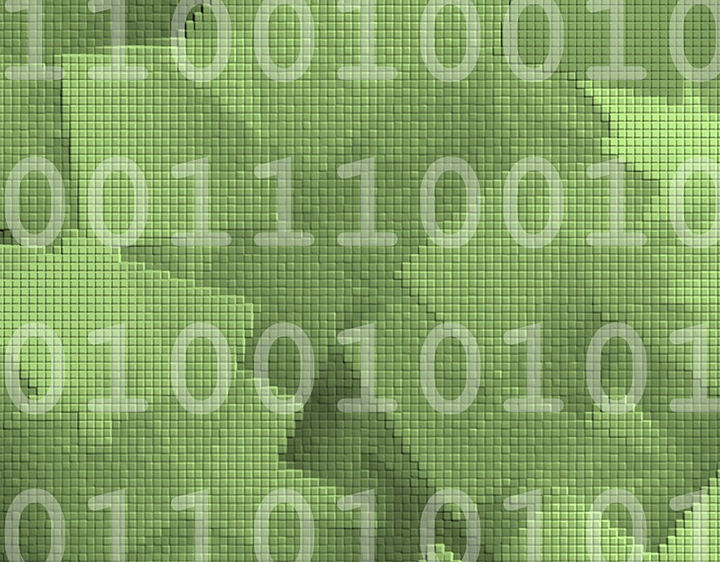Green IT
In order to limit the growing consumption of energy and resources in information technology, various approaches are being pursued generally summarised under the term "Green IT". Specifically, we are characterising nanoscale materials for new, energy-efficient methods of data storage and processing, from nanocomposites to nanoparticles to molecular systems.

Increasing magnetic data storage densityOpen areaClose area
One idea to further increase the data storage density is to represent a bit by the magnetisation direction of one nanoparticle that is much smaller than the bit size to date. This approach gives the possbility to reach a storage density in the range of Tbit/cm2. However, to achieve a magnetisation that is stable over ten years as desired for data storage applications, a material with a high magnetocrystalline anisotropy is needed. On the nanoscale, only a few materials fulfil this condition and the relinquishment of elements of the so-called rare earths further limits the choice.
FePt is one of the materials with the highest known anisotropy and is a prime candidate for magnetic data storage using nanoparticle ensembles. The use of FePt nanoparticles as magnetic storage media has been discussed for more than a decade. However, there are still several obstacles that have to be overcome. In particular, there seems to be a reduced anisotropy in the nanoparticles with respect to the corresponding bulk material, the arrangement of nanoparticles in dense regular superlattices over large areas is not satisfactorily solved and the alignment of the easy axes of magnetisation is another delicate task.
One aim of our work is to identify the most promising materials and to characterise prototypic systems.
Switching without electric currentsOpen areaClose area
Magnetoelectric materials have been proposed for energy savind data storage materials, in which the bits can be written by application of a voltage without any electric current flowing. Due to the many possible combinations, artificial nanocomposites consisting of a magnetostrictive and a piezoelectric component appear to be particularly suitable. Magnetostrictive means that magnetising the material leads to a change in length and vice versa. Piezoelectric means that the change in length is linked to an electrical voltage.
If the magnetostrictive material is embedded in a piezoelectric matrix as a storage medium, the magnetisation can be influenced by applying an electrical voltage through the distortion of the matrix - if the coupling between the components is strong enough. Investigating this coupling is part of our research work.
If the magnetic nanoscale bits are made of a magnetostrictive material like CoFe2O4 and embedded in an electrically insulating piezoelectric matrix like BaTiO3, this device could be used as an energy saving data storage device, in which the bits can be written be application of a voltage without any electric current flowing.